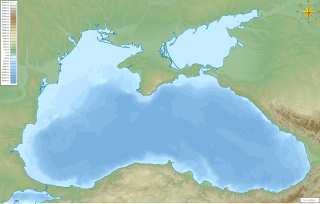
Bithynia was an ancient region, kingdom and Roman province in the northwest of Asia Minor, adjoining the Propontis, the Thracian Bosporus and the Euxine Sea. It bordered Mysia to the southwest, Paphlagonia to the northeast along the Pontic coast, and Phrygia to the southeast towards the interior of Asia Minor.

Nicomedes I, second king of Bithynia, was the eldest son of Zipoetes I, whom he succeeded on the throne in 278 BC.
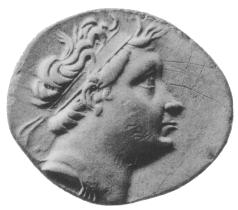
Nicomedes II Epiphanes was the king of Bithynia from 149 to c. 127 BC. He was fourth in descent from Nicomedes I. Nicomedes II was the son and successor of Prusias II and Apame IV. His parents were related as they were maternal cousins.
Ziaelas, third king of Bithynia, was a son of Nicomedes I and Ditizele.
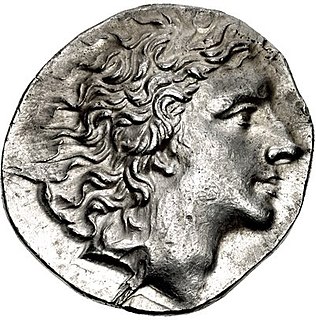
The First Mithridatic War was a war challenging Rome's expanding Empire and rule over the Greek world. In this conflict, the Kingdom of Pontus and many Greek cities rebelling against Rome were led by Mithridates VI of Pontus against the Roman Republic and the Kingdom of Bithynia. The war lasted five years and ended in a Roman victory which forced Mithridates to abandon all his conquests and return to Pontus. The conflict with Mithridates VI would continue in two further Mithridatic Wars.
Mithridates IV of Pontus, sometimes known by his full name Mithridates Philopator Philadelphus, was a prince and sixth ruler of the Kingdom of Pontus.
Etazeta was the second wife of Nicomedes I, king of Bithynia and a ruler of Bithynia.
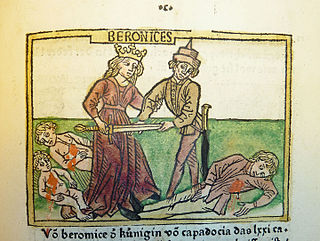
Berenice or Laodice of Cappadocia, also known as Laodice was a princess from the Kingdom of Pontus and a queen of the Kingdom of Cappadocia.
Nicomedes III Euergetes was the king of Bithynia, from c. 127 BC to c. 94 BC. He was the son and successor of Nicomedes II of Bithynia by an unnamed woman.

The Kingdom of Pontus or Pontic Empire was a state founded by the Persian Mithridatic dynasty, which may have been directly related to Darius the Great and the Achaemenid dynasty. The kingdom was proclaimed by Mithridates I in 281 BCE and lasted until its conquest by the Roman Republic in 63 BCE. It reached its largest extent under Mithridates VI the Great, who conquered Colchis, Cappadocia, Bithynia, the Greek colonies of the Tauric Chersonesos, and for a brief time the Roman province of Asia. After a long struggle with Rome in the Mithridatic Wars, Pontus was defeated; part of it was incorporated into the Roman Republic as the province Bithynia et Pontus, and the eastern half survived as a client kingdom.

Cappadocia was a province of the Roman Empire in Anatolia, with its capital at Caesarea. It was established in 17 AD by the Emperor Tiberius, following the death of Cappadocia's last king, Archelaus.

Bithynia and Pontus was the name of a province of the Roman Empire on the Black Sea coast of Anatolia (Turkey). It was formed during the late Roman Republic by the amalgamation of the former kingdoms of Bithynia and Pontus. The amalgamation was part of a wider conquest of Anatolia and its reduction to Roman provinces.
Orsabaris, also spelt as Orsobaris was a Princess from the Kingdom of Pontus.
Orodaltis was a princess from Anatolia who lived in the 1st century BC and was a contemporary to the first Roman Emperor Augustus, who ruled from 27 BC to 14 AD.
Andronicus of Pergamum was an ambassador of Attalus II Philadelphus. He was sent to Rome in 156 BCE, to inform the Roman Senate that Prusias II of Bithynia had attacked the territories of Attalus.
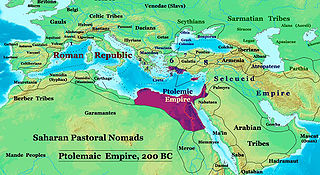
Coinage of the Ptolemaic Kingdom was in use during the last dynasty of Egypt and, briefly, during Roman rule of Egypt.

History of coinage of the Pontic Kingdom probably began during reign of Mithridates II of the Kingdom of Pontus. Early Pontic coinage imitated coinage with Alexander the Great's portraits. Later coinage is well known for its high decree of realism in portraits of the Pontic kings who were proud of their Iranian ancestry. Pontic coin portraitry developed isolated from wider Hellenistic tradition. However, Mithridates V and his son Mithridates VI partially abandoned oriental influences in the coin portraitry.
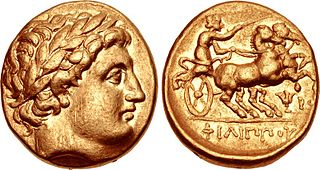
Ancient Rhodian coinage refers to the coinage struck by an independent Rhodian polity during Classical and Hellenistic eras. The Rhodians also controlled territory on neighbouring Caria that was known as Rhodian Peraia under the islanders' rule. However, many other eastern Mediterranean states and polities adopted Rhodian (Chian) monetary standard following Rhodes. It has been speculated how much Rhodians had influenced the spread of the monetary standard. Coinage using the standard achieved a wide circulation in the region. Even the Ptolemaic Kingdom, a major Hellenistic state in the eastern Mediterranean, briefly adopted the Rhodian monetary standard.

The Bosporan era, also called the Bithynian era, Pontic era or Bithyno-Pontic era, was a calendar era used from 149 BC at the latest until at least AD 497 in Asia Minor and the Black Sea region. It originated in the Bithynian Kingdom and was also used in the Pontic Kingdom and, for the longest time, in the Bosporan Kingdom. The calendar era begins with the assumption of the royal title by Zipoetes I of Bithynia in October 297 BC, which marks the start of its year one. The Bosporan year began at the autumnal equinox.

